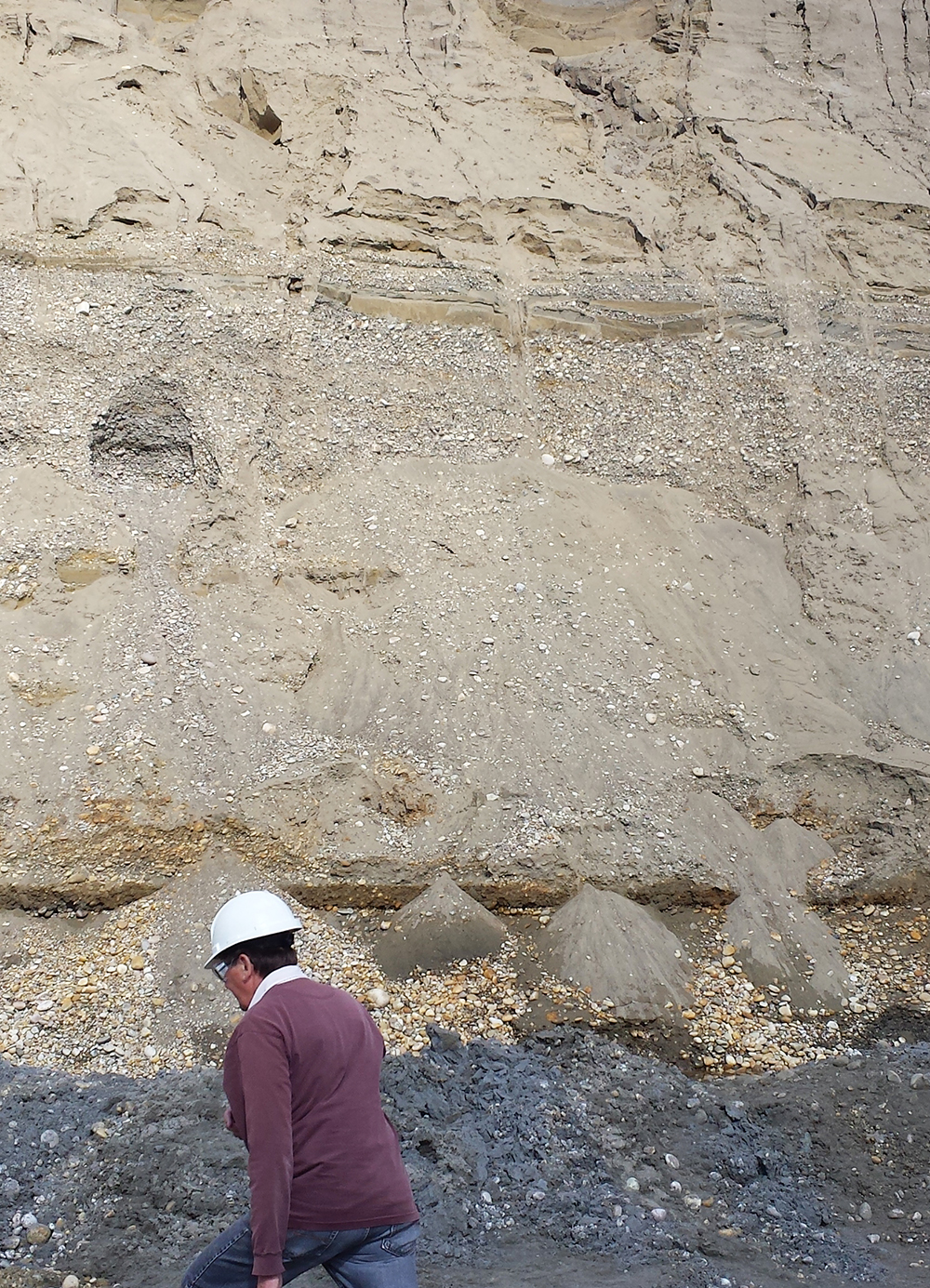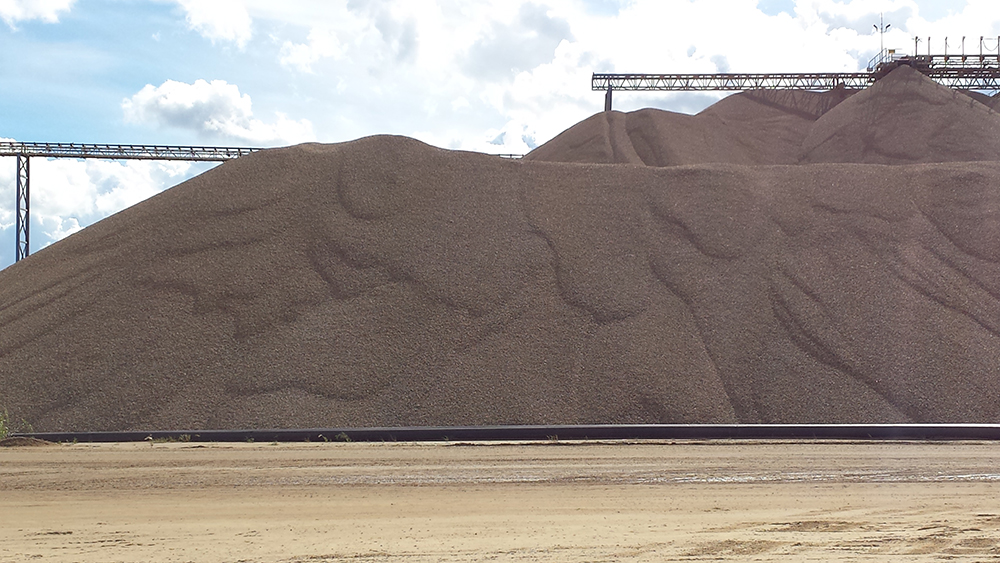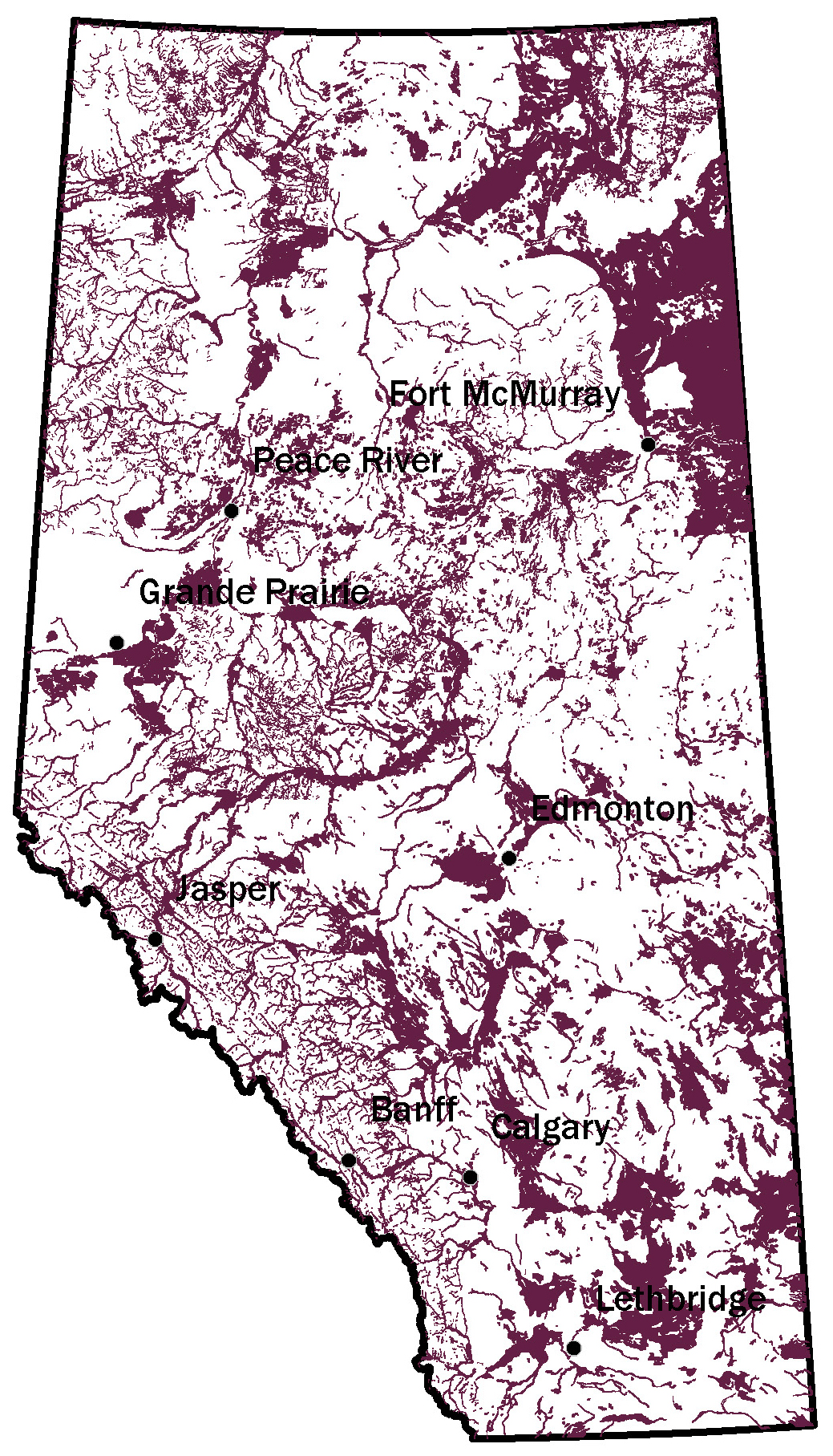![]()

Sand and gravel deposit west of Edmonton, Alberta

Pile of sorted gravel west of Edmonton
Composition
Sand and gravel refers to loose rock and mineral materials. Sand grains range in size from 0.075 mm to <4.75 mm, and gravel ranges in size from 4.75 mm to <75 mm. Sand and gravel deposits commonly contain minerals and rocks that are resistant to weathering, like quartz, quartzite, and chert. The deposits may also host a wide range of rocks and minerals of sedimentary, igneous, and metamorphic origins. Tiny grains of garnet, magnetite, gold, and platinum, are recoverable in some Alberta gravel pits.
Age and Formation
In Alberta, sand and gravel are found in river and glacial deposits. Flowing water moves sediment of different sizes, sorts it by grain size, and washes away fine silt and clay. River deposits may be from before, or after, the last glaciation event that took place 12000 - 22000 years ago. Sand and gravel maybe made by crushing larger boulders or hard bedrock deposits, like limestone and dolomite.
Important properties
Sand and gravel is durable, inert, bindable or usable as is, and is resistant to chemical and physical erosion, and weathering. In Alberta, sand and gravel is abundant and found throughout much of the province.
Uses
Sand and gravel is the geological resource you encounter most often in your daily life. Sand and gravel are the primary ingredients in concrete and asphalt used in homes, buildings, roads, and sidewalks. It is in playgrounds, added to garden soil, roof shingles, and bricks. It is used for drainage and filtration. Sand and gravel improves traction on sidewalks and roads. Silica sand has a high quartz content and is used for making glass, fibreglass, insulation, as an abrasive, and is injected into hydraulically fractured boreholes to hold cracks open for the production of oil and gas. Alberta is the second largest producer of sand and gravel in Canada. Ontario produces more sand and gravel than any other province or territory.
It’s a Fact!
Alberta uses enough sand and gravel each year to build a wall 3.8 m tall and 1 m thick around the entire province (3990 km).
Discover!
Canada’s first chemical-free filtered swimming pool in Edmonton, Alberta
Why is gravel better than sand for traction on icy highways?
Where to find sand and gravel
